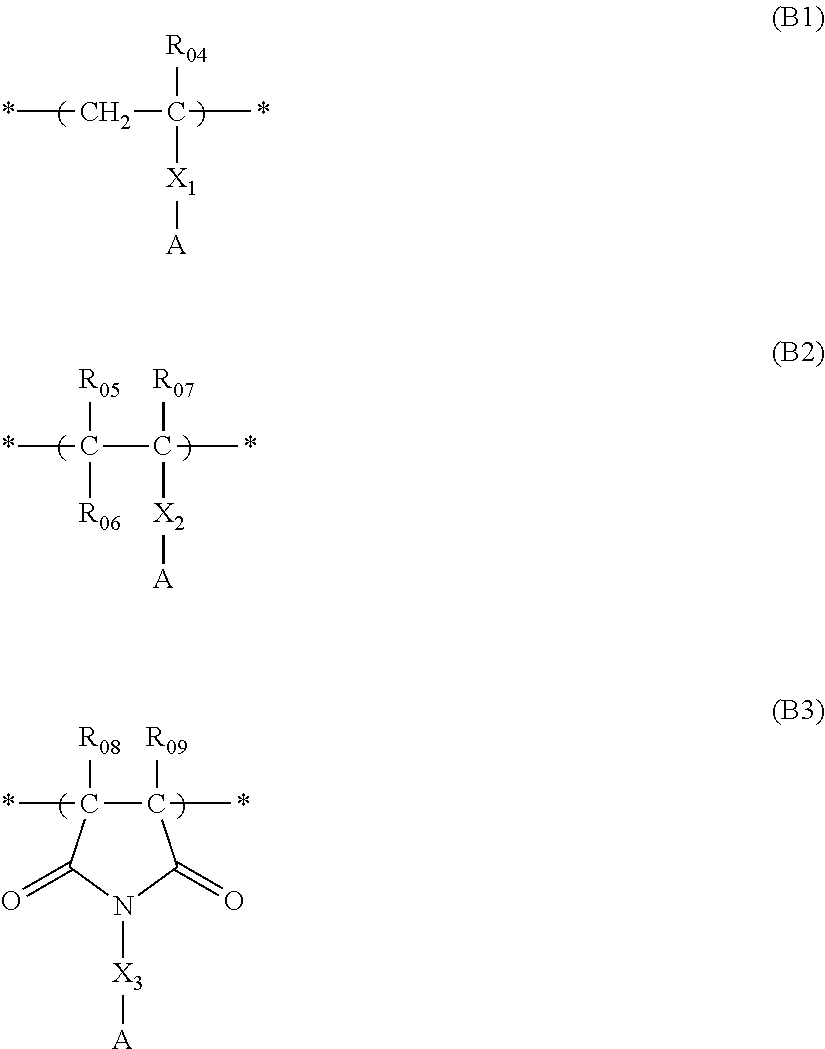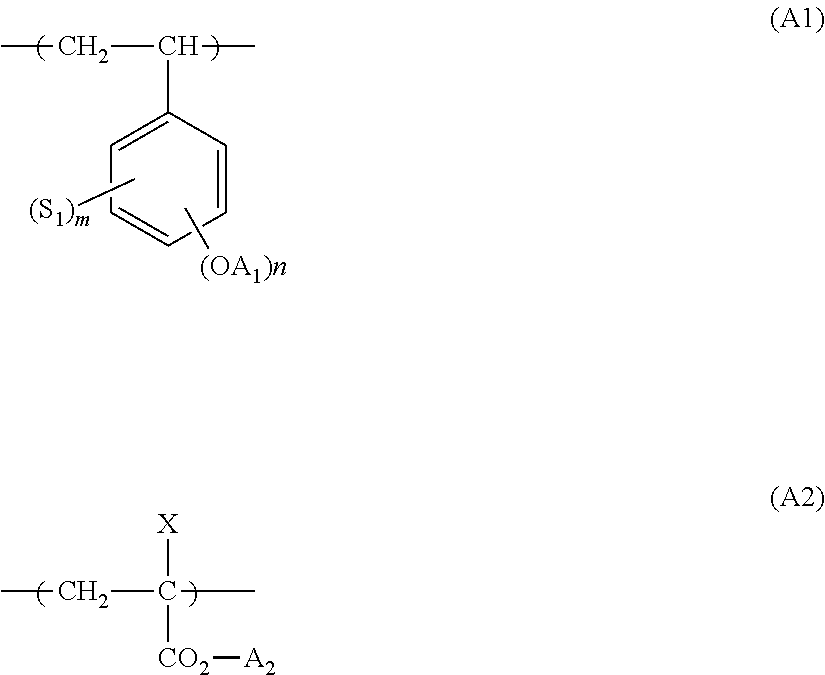Actinic ray-sensitive or radiation-sensitive resin composition, and resist film and pattern forming method using the same
a technology of radiation-sensitive resin and resist film, which is applied in the direction of photomechanical equipment, instruments, originals for photomechanical treatment, etc., can solve the problems of reduced film thickness, reduced resolution of isolated patterns, and deterioration of dry etching resistan
- Summary
- Abstract
- Description
- Claims
- Application Information
AI Technical Summary
Benefits of technology
Problems solved by technology
Method used
Image
Examples
synthesis example 1
Resin P-14
[0494]Resin P-14 was synthesized according to the following scheme.
[0495]Compound (5) (100.00 g) was dissolved in 400 g of ethyl acetate. The obtained solution was cooled to 0° C., and 47.60 g of sodium methoxide (a 28 mass % methanol solution) was added dropwise over 30 minutes. This mixture was stirred at room temperature over 5 hours and to the resulting reaction solution, ethyl acetate was added. The organic layer was washed with distilled water three times and dried over anhydrous sodium sulfate, and the solvent was removed by distillation. In this way, 131.70 g of Compound (6) (a 54 mass % ethyl acetate solution) was obtained.
[0496]Ethyl acetate (56.00 g) was added to 18.52 g of Compound (6) (a 54% ethyl acetate solution) and thereto, 31.58 g of 1,1,2,2,3,3-hexafluoropropane-1,3-disulfonyl difluoride was added. The system was cooled to 0° C., and a solution obtained by dissolving 12.63 g of triethylamine in 25.00 g of ethyl acetate was added dropwise over 30 minutes....
synthesis example 2
Other Resins
[0502]Each of Resins P-1 to P-13 and P-15 to P-55 was synthesized in the same manner as in Synthesis Example 1. Also, these resins were evaluated in the same manner as in Synthesis Example 1. The results obtained are shown in Table 1 below.
[0503]In Table 1 below, the weight average molecular weight, compositional ratio (by mol) and polydispersity of each of Resins P-1 to P-55 are shown together.
TABLE 1Weight AverageMolecular WeightCompositional RatioPolydispersityP-18000603010——1.55P-214000652510——1.43P-310000602515——1.50P-415000603010——1.45P-51300065305——1.36P-61000055405——1.54P-71000062353——1.57P-810000652510——1.63P-912000603010——1.48P-10800065287——1.44P-1110000702010——1.51P-1216000751510——1.50P-1312000603010——1.49P-1411000553510——1.47P-151000080155——1.52P-169000602515——1.62P-17700070237——1.61P-188000603010——1.64P-19500060355——1.52P-201300050202010—1.53P-21800055151515—1.47P-229000503587—1.35P-23100006020137—1.54P-24800040202020—1.65P-25700050202010—1.64P-2617000522020...
synthesis example 3
Compound N-7
[0511]Compound N-7 was synthesized based on [0354] of JP-A-2006-330098.
[0512]Any of W-1 to W-4 shown below was used as the surfactant.
W-1: Megaface R08 (produced by Dainippon Ink & Chemicals, Inc.; fluorine-containing)
W-2: Polysiloxane Polymer KP-341 (produced by Shin-Etsu Chemical Co., Ltd.; silicon-containing)
W-3: Troysol S-366 (produced by Troy Chemical; fluorine-containing)
W-4: PF6320 (produced by OMNOVA; fluorine-containing)
[0513]Any appropriate mixture of S-1 to S-4 shown below was used as the solvent.
S-1: PGMEA (b.p.=146° C.)
S-2: PGME (b.p.=120° C.)
[0514]S-3: Methyl lactate (b.p.=145° C.)
S-4: Cyclohexanone (b.p.=157° C.)
[0515]The components shown in Tables 2 and 3 below were dissolved in the solvent shown in the same Tables to prepare a solution having a solid content concentration of 3.0 mass %, and this solution was filtered through a polytetrafluoroethylene filter having a pore size of 0.1 μm, whereby positive resist solutions were obtained.
[0516]The numerical ...
PUM
| Property | Measurement | Unit |
|---|---|---|
| roughness | aaaaa | aaaaa |
| carbon number | aaaaa | aaaaa |
| carbon number | aaaaa | aaaaa |
Abstract
Description
Claims
Application Information
 Login to View More
Login to View More - R&D
- Intellectual Property
- Life Sciences
- Materials
- Tech Scout
- Unparalleled Data Quality
- Higher Quality Content
- 60% Fewer Hallucinations
Browse by: Latest US Patents, China's latest patents, Technical Efficacy Thesaurus, Application Domain, Technology Topic, Popular Technical Reports.
© 2025 PatSnap. All rights reserved.Legal|Privacy policy|Modern Slavery Act Transparency Statement|Sitemap|About US| Contact US: help@patsnap.com



